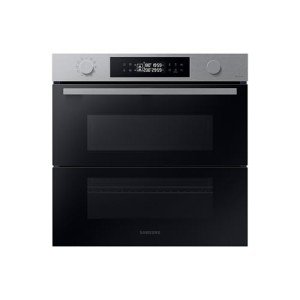The Rise of Built-In Ovens: A Seamless Approach to Modern Cooking
In contemporary kitchens, where design looks mix seamlessly with performance, one appliance stands out as a real game changer: the built-in oven. As homeowners and chefs alike continue to seek innovative solutions that enhance their cooking experience, built-in ovens have become significantly popular. This article explores the advantages, considerations, and trends surrounding built-in ovens, highlighting why they are a vital function in contemporary cooking spaces.
What is a Built-In Oven?
A built-in oven is a kitchen device developed to be integrated into the kitchen cabinetry of a kitchen area rather than standing alone. Unlike traditional freestanding ovens, which can be moved and placed anywhere, built-in ovens been available in numerous styles and sizes to fit specifically within designated spaces. Offered in single or double setups, these ovens use a streamlined appearance that complements contemporary kitchen area styles.
Advantages of Built-In Ovens
1. Space-Saving Design
Among the most appealing advantages of built-in ovens is their space-saving design. By incorporating the oven into cabinetry, you can maximize valuable counter and flooring space. This is especially helpful in smaller kitchen areas, where maximizing space is essential. Built-in ovens can be installed at eye level, making them more available and reducing the need to flex down.
2. Aesthetic Appeal
Built-in ovens add to a sleek and cohesive kitchen style. Readily available in numerous finishes-- such as stainless-steel, black, white, and custom-made cabinets-- they can mix flawlessly into the overall design. This aesthetic appeal improves the kitchen area's visual harmony and elevates the space, producing a contemporary and sophisticated environment.
3. Improved Functionality
Numerous built-in ovens come equipped with advanced cooking technologies, such as convection cooking, steam ovens, and wise functions. These improvements enable versatile cooking options, making it easier to accomplish professional-level results in the house. Smart built-in ovens can even link to Wi-Fi, allowing users to control the oven remotely, get notices, and access a range of cooking programs and dishes.
4. Enhanced Ventilation
Because built-in ovens can be integrated with kitchen hoods and ventilation systems, they can assist keep much better air quality and lower cooking smells. This is particularly considerable for those who like to prepare with aromatic spices and active ingredients, as an effective ventilation system can keep the kitchen area comfy and inviting.
5. Personalization Options
Built-in ovens offer a wide variety of personalization choices to fit private cooking designs and needs. From professional-grade home appliances with multiple cooking modes to compact styles for smaller kitchens, property owners can choose the oven that fits their specific requirements. visite site offer personalized front panels, permitting you to match the oven's look to your kitchen cabinetry for a genuinely combined appearance.
Factors to consider When Choosing a Built-In Oven
While built-in ovens have lots of advantages, there are necessary factors to consider to bear in mind before making a purchase:
1. Cost
Built-in ovens usually feature a higher cost than their freestanding counterparts due to their design and setup requirements. It's essential to consider both the cost of the oven and any additional expenditures connected to cabinetry adjustments or setup.

2. Setup Requirements
Setting up a built-in oven often needs expert support, particularly if you need to customize existing cabinetry. visite site that you think about any costs associated with setup, including labor and prospective kitchen cabinetry changes.
3. Size and Dimensions
Before purchasing a built-in oven, measure the designated space accurately to make sure a proper fit. Built-in ovens been available in different sizes and setups, so picking one that aligns with your requirements and kitchen area style is essential.
4. Way of life and Usage
Consider your cooking routines and needs when selecting a built-in oven. If you often host big gatherings, a double oven might be more useful. On the other hand, if you have a compact cooking area, a single-wall oven may suffice.
Patterns in Built-In Ovens
The kitchen area device market is continuously developing, and built-in ovens are not exempt from emerging trends. Some existing trends include:
Smart Technology Integration: With the rise of clever home technology, built-in ovens now typically feature connection alternatives. This allows users to keep an eye on cooking progress and adjust settings through mobile apps.
Energy Efficiency: As sustainability ends up being a concern, many manufacturers are buying energy-efficient built-in ovens that decrease energy usage while keeping performance.
Multi-functional Designs: Built-in ovens now use features such as air frying, sluggish cooking, and steaming, supplying adaptability that meets a vast array of cooking approaches.
Conclusion
Built-in ovens certainly represent a best blend of design, function, and convenience in today's kitchens. As more house owners choose this contemporary option, the focus moves to developing a cooking area that is as aesthetically pleasing as it is practical. Whether you are developing a new home or redesigning your kitchen, considering a built-in oven might raise your cooking experience and change your kitchen area into an elegant and practical haven. With an array of alternatives available and ongoing developments in innovation, built-in ovens stay a standout choice for both beginner cooks and culinary lovers alike.
